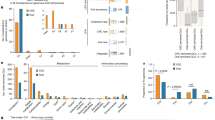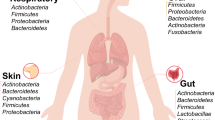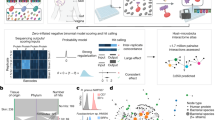Abstract
Calorie restriction (CR) and intermittent fasting (IF) without malnutrition reduce the risk of cancer development. Separately, CR and IF can also lead to gut microbiota remodelling. However, whether the gut microbiota has a role in the antitumour effect related to CR or IF is still unknown. Here we show that CR, but not IF, protects against subcutaneous MC38 tumour formation through a mechanism that is dependent on the gut microbiota in female mice. After CR, we identify enrichment of Bifidobacterium through 16S rRNA sequencing of the gut microbiome. Moreover, Bifidobacterium bifidum administration is sufficient to rescue the antitumour effect of CR in microbiota-depleted mice. Mechanistically, B. bifidum mediates the CR-induced antitumour effect through acetate production and this effect is also dependent on the accumulation of interferon-γ+CD8+ T cells in the tumour microenvironment. Our results demonstrate that CR can modulate the gut taxonomic composition, which should be of oncological significance in tumour growth kinetics and cancer immunosurveillance.
This is a preview of subscription content, access via your institution
Access options
Access Nature and 54 other Nature Portfolio journals
Get Nature+, our best-value online-access subscription
$29.99 / 30 days
cancel any time
Subscribe to this journal
Receive 12 digital issues and online access to articles
$119.00 per year
only $9.92 per issue
Buy this article
- Purchase on Springer Link
- Instant access to full article PDF
Prices may be subject to local taxes which are calculated during checkout








Similar content being viewed by others
Data availability
All data supporting the findings of this study are available within the article and its Supplementary Information files. The data for the 16S amplicon sequencing have been deposited at the Sequence Read Archive and are publicly available under accession no. PRJNA900444. Source data are provided with this paper.
References
Sung, H. et al. Global cancer statistics 2020: GLOBOCAN estimates of incidence and mortality worldwide for 36 cancers in 185 countries. CA Cancer J. Clin. 71, 209–249 (2021).
Ligibel, J. Lifestyle factors in cancer survivorship. J. Clin. Oncol. 30, 3697–3704 (2012).
Lien, E. C. & Vander Heiden, M. G. A framework for examining how diet impacts tumour metabolism. Nat. Rev. Cancer 19, 651–661 (2019).
Thanikachalam, K. & Khan, G. Colorectal cancer and nutrition. Nutrients 14, 164 (2019).
Ocampo, A., Liu, J., Schroeder, E. A., Shadel, G. S. & Barrientos, A. Mitochondrial respiratory thresholds regulate yeast chronological life span and its extension by caloric restriction. Cell Metab. 16, 55–67 (2012).
Colman, R. J. et al. Caloric restriction delays disease onset and mortality in rhesus monkeys. Science 325, 201–204 (2009).
Alidadi, M. et al. The effect of caloric restriction and fasting on cancer. Semin. Cancer Biol. 73, 30–44 (2021).
De Lorenzo, M. S. et al. Caloric restriction reduces growth of mammary tumors and metastases. Carcinogenesis 32, 1381–1387 (2011).
Hursting, S. D., Lavigne, J. A., Berrigan, D., Perkins, S. N. & Barrett, J. C. Calorie restriction, aging, and cancer prevention: mechanisms of action and applicability to humans. Annu. Rev. Med. 54, 131–152 (2003).
Weng, M. L. et al. Fasting inhibits aerobic glycolysis and proliferation in colorectal cancer via the Fdft1-mediated AKT/mTOR/HIF1α pathway suppression. Nat. Commun. 11, 1869 (2020).
Di Biase, S. et al. Fasting-mimicking diet reduces HO-1 to promote T cell-mediated tumor cytotoxicity. Cancer Cell 30, 136–146 (2016).
Castejón, M. et al. Energy restriction and colorectal cancer: a call for additional research. Nutrients 12, 114 (2020).
Mattson, M. P., Longo, V. D. & Harvie, M. Impact of intermittent fasting on health and disease processes. Ageing Res. Rev. 39, 46–58 (2017).
Zhang, C. et al. Structural modulation of gut microbiota in life-long calorie-restricted mice. Nat. Commun. 4, 2163 (2013).
Fabbiano, S. et al. Functional gut microbiota remodeling contributes to the caloric restriction-induced metabolic improvements. Cell Metab. 28, 907–921 (2018).
Li, G. et al. Intermittent fasting promotes white adipose browning and decreases obesity by shaping the gut microbiota. Cell Metab. 26, 801 (2017).
Wang, T. et al. Structural segregation of gut microbiota between colorectal cancer patients and healthy volunteers. ISME J. 6, 320–329 (2012).
Gopalakrishnan, V. et al. Gut microbiome modulates response to anti-PD-1 immunotherapy in melanoma patients. Science 359, 97–103 (2018).
Matson, V. et al. The commensal microbiome is associated with anti-PD-1 efficacy in metastatic melanoma patients. Science 359, 104–108 (2018).
Routy, B. et al. Gut microbiome influences efficacy of PD-1-based immunotherapy against epithelial tumors. Science 359, 91–97 (2018).
Wang, S. et al. Gut microbiota mediates the anti-obesity effect of calorie restriction in mice. Sci. Rep. 8, 13037 (2018).
Gennari, A., Conte, P., Rosso, R., Orlandini, C. & Bruzzi, P. Survival of metastatic breast carcinoma patients over a 20-year period: a retrospective analysis based on individual patient data from six consecutive studies. Cancer 104, 1742–1750 (2005).
Vétizou, M. et al. Anticancer immunotherapy by CTLA-4 blockade relies on the gut microbiota. Science 350, 1079–1084 (2015).
Sivan, A. et al. Commensal Bifidobacterium promotes antitumor immunity and facilitates anti-PD-L1 efficacy. Science 350, 1084–1089 (2015).
Gopalakrishnan, V., Helmink, B. A., Spencer, C. N., Reuben, A. & Wargo, J. A. The influence of the gut microbiome on cancer, immunity, and cancer immunotherapy. Cancer Cell 33, 570–580 (2018).
He, Y. et al. Gut microbial metabolites facilitate anticancer therapy efficacy by modulating cytotoxic CD8+ T cell immunity. Cell Metab. 33, 988–1000 (2021).
Zhang, S.-L. et al. Pectin supplement significantly enhanced the anti-PD-1 efficacy in tumor-bearing mice humanized with gut microbiota from patients with colorectal cancer. Theranostics 11, 4155–4170 (2021).
Bachem, A. et al. Microbiota-derived short-chain fatty acids promote the memory potential of antigen-activated CD8+ T cells. Immunity 51, 285–297 (2019).
Aon, M. A. et al. Untangling determinants of enhanced health and lifespan through a multi-omics approach in mice. Cell Metab. 32, 100–116 (2020).
Lee, C. et al. Fasting cycles retard growth of tumors and sensitize a range of cancer cell types to chemotherapy. Sci. Transl. Med. 4, 124ra127 (2012).
Finegold, S. M., Attebery, H. R. & Sutter, V. L. Effect of diet on human fecal flora: comparison of Japanese and American diets. Am. J. Clin. Nutr. 27, 1456–1469 (1974).
Kong, C.-Y. et al. Diet consisting of balanced yogurt, fruit, and vegetables modifies the gut microbiota and protects mice against nonalcoholic fatty liver disease. Mol. Nutr. Food Res. 63, e1900249 (2019).
Huang, J.-T. et al. Calorie restriction conferred improvement effect on long-term rehabilitation of ischemic stroke via gut microbiota. Pharmacol. Res. 170, 105726 (2021).
Zhang, Z., Chen, X., Loh, Y. J., Yang, X. & Zhang, C. The effect of calorie intake, fasting, and dietary composition on metabolic health and gut microbiota in mice. BMC Biol. 19, 51 (2021).
Maifeld, A. et al. Fasting alters the gut microbiome reducing blood pressure and body weight in metabolic syndrome patients. Nat. Commun. 12, 1970 (2021).
Lee, D. K. et al. Anti-proliferative effects of Bifidobacterium adolescentis SPM0212 extract on human colon cancer cell lines. BMC Cancer 8, 310 (2008).
Wang, F., Yin, Q., Chen, L. & Davis, M. M. Bifidobacterium can mitigate intestinal immunopathology in the context of CTLA-4 blockade. Proc. Natl Acad. Sci. USA 115, 157–161 (2018).
Qiu, J. et al. Acetate promotes T cell effector function during glucose restriction. Cell Rep. 27, 2063–2074 (2019).
Koh, A., Da Vadder, F., Kovatcheva-Datchary, P. & Backhed, F. From dietary fiber to host physiology: short-chain fatty acids as key bacterial metabolites. Cell 165, 1332–1345 (2016).
Acknowledgements
This work was supported by grants from the National Natural Science Foundation of China (no. 81872245 to L.-S.W. and no. 81803601 to B.H.), the Fundamental Research Funds for Minhang Hospital (no. 2020MHJC12 to Y.-Q.M. and no. 2022MHBJ01 to B.H.), the Research Project of Shanghai Municipal Health Commission (no. 20214Y0328 to Y.-Q.M. and 2022YQ052 to B.H.) and the Open Research Fund of State Key Laboratory of Genetic Engineering, Fudan University (no. SKLGE-2112 to L.-S.W.).
Author information
Authors and Affiliations
Contributions
Y.-Q.M., B.H. and L.-S.W. designed the experiments. Y.-Q.M., J.-T.H., S.-L.Z., H.J., S.-H.H. and C.K. performed the experiments and the statistical analysis. H.-L.C., C.-Y.K., Z.-M.L. and B.H. contributed to the scientific discussion. Y.-Q.M. and L.-S.W. wrote the manuscript. Y.-Q.M., J.-T.H., C.K. and L.-S.W. revised the manuscript. Y.-Q.M., B.H. and L.-S.W. provided funding support.
Corresponding authors
Ethics declarations
Competing interests
The authors declare no competing interests.
Peer review
Peer review information
Nature Metabolism thanks Bertrand Routy, Laurence Zitvogel and Jay H Chung for their contribution to the peer review of this work. Primary Handling Editor: Ashley Castellanos-Jankiewicz, in collaboration with the Nature Metabolism team.
Additional information
Publisher’s note Springer Nature remains neutral with regard to jurisdictional claims in published maps and institutional affiliations.
Extended data
Extended Data Fig. 1 Structural rearrangement of gut microbiota in mice under CR and IF treatment.
(a, b) Effects of ABX treatment on diversity and richness of gut microbiota revealed by Shannon index (a) and Chao1 index (b). n = 5 mice. (c,d) Change in body weight trajectories (c) and average body weight at the end of the study (d). AL, n = 8 mice; CR, n = 8 mice; IF, n = 8 mice; ABX + AL, n = 10 mice; CR + ABX, n = 10 mice; ABX + IF, n = 10 mice. (e-h) Comparison of relative abundance of four phyla Bacteroidetes(e), Firmicutes(f), Proteobacteria(g), and Verrucomicrobia(h) of gut microbiota from mice under AL, CR and IF treatment. n = 5 mice. Data were mean ± s.e.m. Statistical analysis was performed using unpaired two-tailed t-test.
Extended Data Fig. 2 The α- and β-diversity of gut microbiota in mice under CR and IF treatment.
(a) Comparison of phylum-level proportional abundance of feces from mice under AL, CR and IF treatment. n = 5 mice. (b-d)Effects of CR and IF treatment on diversity and richness of fecal microbiota revealed respectively by Observed_species (b), Simpson index (c) and ACE index (d), n = 5 mice. (e) Changes in genus levels of related gut microbiota shown by heatmap. n = 5 mice. Data were mean ± s.e.m. Statistical analysis was performed using unpaired two-tailed t-test.
Extended Data Fig. 3 The abundance of Bifidobacterium were dynamically over-represented in CR group.
(a) Stool samples were collected from the CR, IF and AL groups at D5 (the beginning time of CR as baseline), D15 (10 days after CR and IF treatment) and D35 (30 days after CR and IF treatment). Comparison of phylum-level proportional abundance of feces from mice under AL, CR and IF treatment. n = 5 mice. (b-d) Composition of gut microbiota in CR groups at different time D5 (b), D15 (c) and D35 (d) were shown in pie chart. n = 5 mice. (e-g) The abundance of Bifidobacterium at different time in AL (e), CR (f) and IF (g) group, each line represents a mouse. n = 5 mice. Data were mean ± s.e.m.
Extended Data Fig. 4 CR and B.bifidum treatment reshaped the tumor immune environment.
Representative images of IHC staining for CD4 + , CD8 + T cell, CD11c, NK1.1 and PD-1. Data were representative of one independent experiments and three independent samples.
Extended Data Fig. 5 Gut microbiome from CR treatment exerted anti-tumor effect depended on CD8.
(a) MC38 tumor growth kinetics. The experimental design: Mice were transplanted the gut microbiome from CR treated mice, followed by anti-CD8 antibody treatment. FMT: Fecal microbiota transplantion. n = 5 mice. Data are mean ± s.e.m. Statistical analysis was performed using two-way ANOVA. (b,c) Representative images of dissected tumors (b) and tumor weights (c) on the 26th day. n = 5 mice. (d) Representative flow cytometry plots for one mouse/group were shown. (e) The percentage of tumor-infiltrating IFNγ+CD8+T cells in the tumor tissues. Data were mean ± s.e.m. (c,e) Statistical analysis was performed using unpaired two-tailed t-test.
Extended Data Fig. 6 CR and B.bifidum treatment elevated the level of acetate in plasma and tumor.
(a-c) Serum SCFA profile (a), Tumor SCFA profile (b) and Liver SCFA profile (c) of mice which were treated with CR or ABX plus with DH5α, B.bifidum or acetate followed by CR treatment. CR, n = 4 mice; ABX + CR + DH5α, n = 4 mice; ABX + CR + B.bifidum, n = 4 mice; ABX + CR + acetate, n = 4 mice. Data were mean ± s.e.m. Statistical analysis was performed using unpaired two-tailed t-test.
Supplementary information
Source data
Source Data Fig. 1
Statistical source data.
Source Data Fig. 2
Statistical source data.
Source Data Fig. 3
Statistical source data.
Source Data Fig. 4
Statistical source data.
Source Data Fig. 5
Statistical source data.
Source Data Fig. 6
Statistical source data.
Source Data Fig. 7
Statistical source data.
Source Data Fig. 8
Statistical source data.
Source Data Extended Data Fig. 1
Statistical source data.
Source Data Extended Data Fig. 2
Statistical source data.
Source Data Extended Data Fig. 3
Statistical source data.
Source Data Extended Data Fig. 5
Statistical source data.
Source Data Extended Data Fig. 6
Statistical source data.
Rights and permissions
Springer Nature or its licensor (e.g. a society or other partner) holds exclusive rights to this article under a publishing agreement with the author(s) or other rightsholder(s); author self-archiving of the accepted manuscript version of this article is solely governed by the terms of such publishing agreement and applicable law.
About this article
Cite this article
Mao, YQ., Huang, JT., Zhang, SL. et al. The antitumour effects of caloric restriction are mediated by the gut microbiome. Nat Metab 5, 96–110 (2023). https://doi.org/10.1038/s42255-022-00716-4
Received:
Accepted:
Published:
Issue Date:
DOI: https://doi.org/10.1038/s42255-022-00716-4
This article is cited by
-
Effects of dietary intervention on human diseases: molecular mechanisms and therapeutic potential
Signal Transduction and Targeted Therapy (2024)
-
Fasting and fasting-mimicking conditions in the cancer immunotherapy era
Journal of Physiology and Biochemistry (2024)
-
Role of the microbiota in response to and recovery from cancer therapy
Nature Reviews Immunology (2023)
-
Anticancer action of caloric restrictions via microbiota
Nature Metabolism (2023)



